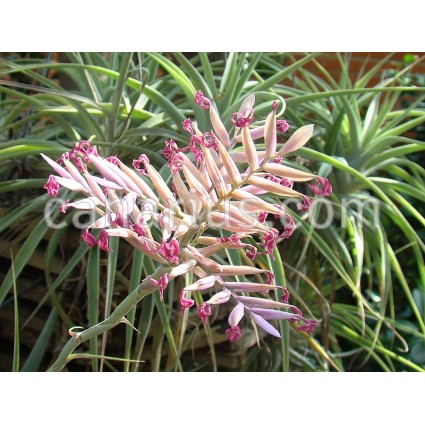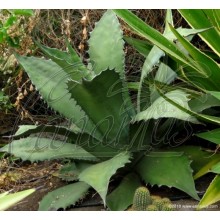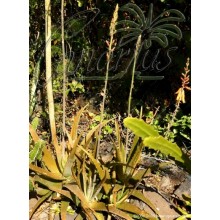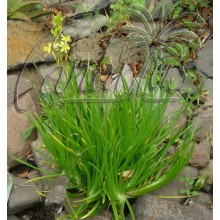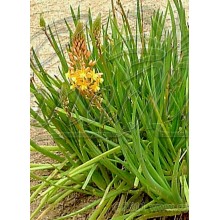Tillandsia cacticola
NEW!
Neu
Everybody wants to grow one, because of its large and showy lilac inflorescence, regularly produced in late spring and lasting some months. Rosettes are about 20 cm in size, with soft, wide, channeled leaves. T. cacticola is native to Peru, where it typically grows on cacti. It is a "vulnerable" species according to the IUCN red list but it is easy to grow in cultivation. This Tillandsia is always on demand because it is not prolific so each year it will give just one or two pups. It is better to keep Tillandsia cacticola away from frost!
Our Tillandsias - What do we ship?
We grow our grey-leaved tillandsias outdoors, here in Tenerife. We start them by dividing large adults, so they are all "XXL" in size. They grow exposed to full sun, rain and wind during the winter months and we shift them to morning-to-midday sun during the hot months. By doing so they become very robust.
Tillandsias are extreme epiphytes that typically do not like to be planted in pots. Most of them prefer to be hung on branches or wires. We do not provide any support with the plant that we ship so be prepared to fix your airplant. We recommend to tie them with nylon fishing line, or metal wire as a second option. We never use glue, since it can cause problems.
If you want to learn more about what we ship, including some bromeliads, click our our information menu, then read "What we exactly ship" and see pictures of our plants on the packing desk.
The picture of the inflorescence with the background of more T. cacticola is from Wikimedia Commons, by Dick Culbert from Gibsons, B.C., Canada - Tillandsia cacticola, CC BY 2.0, https://commons.wikimedia.org/w/index.php?curid=34449768
| Anbau | Innenanbau |
| Herkunft der Arten | Amerika |
| Präsentation | Freiliegende Wurzeln |
| Maximale Größe | 10cm-20cm |
| Botanische Familie | Bromeliaceae |
| Lichtbedürfnis | Sonne |
| Mindesttemperatur im Winter | 5 ºC bis 10 ºC |
| Blütezeit | Frühjahr |
| Pflanzentyp | krautartig |
| Farbe | Rosa |
| Wuchsform | Perennierend |















